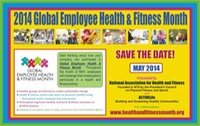Cats do it. So do dogs, horses, giraffes, chimps and practically every other animal – even birds. Humans on the other hand, well, not so much. Oh yes, we might reach for the sky or bend over to our knees from time to time but, for most, stretching is just not something we think about very often. That is until we experience back pain or a so-called “pulled muscle.”Another thing is that stretching for increased mobility, locomotion and
What To Do
And How To Do It
To do this properly, you will need a comfortable floor mat. A bed works pretty well, too. Main thing is something underneath you that will forgive the pressure of your body. The floor and most mats are too hard. If it hurts to get down on the deck, most people won't stick with it. I wouldn't either. So I suggest a deeply padded mat. Those really into stretching sometimes object to thick mats, but da coach knows. Get a padded mat!
Another thing is that stretching for increased mobility, locomotion and confidence must be frequent and consistent. It won't work otherwise. So make a commitment, or forget about it. It’s your body and you have to put up with whatever limitations lie ahead. Avoid your part of the bargain and pay the price.
Yes, it’s a choice. But don’t whine to others if you opt for ass-sitting.
Another objection to stretching is getting down on the floor because sooner or later you have to get up. Getting off the deck is not easy, especially if one lacks flexibility and basic leg strength. We are working on a YouYube piece that goes through this drill, so be sure to check in with Da Coach for tips to get down and off the deck with ease and confidence.
I checked out floor mats at a local sporting goods today and found an acceptable mat for about $70 including tax. It folds up nicely to stow, offers sufficient cushion and is large enough to fit an average adult male. If that is a little high end for you right now, put in on your Santa Claus list. In the interim, use a bed.
So remember what Da Coach recommends: Fitness begins with your choices.
The older you are, the more your fitness choices contribute to the quality of your life today. It’s not just what the doctor can do for you, but what you do for yourself on a daily basis that will determine your peace, joy and delight.
One of my clients, an 85-year-old man, unwilling to sit in a chair and slowly decay, has taken to exercise with increasingly positive results. His strength has shown remarkable improvement and, with it, his confidence and commitment to do more, including moderate aerobic activity. But for some reason, he has neglected what I believe to be the most important parts of recovering one’s independence and mobility in the later years: stretching.
Why? Because it’s b-o-r-i-n-g, and seems so, well, innocuous.
For many older people, proper stretching is the gateway to increase mobility, confidence and independent living. Why? Because stretching is directly related to all body movement and regular movement is what stimulates the cardio-vascular system to maintain good heart health, blood flow and lung function.
If it hurts to move because of poor posture and reduced joint range of motion, people just won’t move. Avoiding proper movement and regular physical activity is a one-way street to loss of strength, power, balance, and self-confidence. Eventually, older people fall, experience fragility, muscle weakness and become increasingly dependent up others. This is not the case among most active elderly.
Physical degeneration in later life is not only age-related, much of it is the predictable result of lack of information and encouragement to get back into life and take responsibility for one’s self.
In fact, we can induce all the characteristics of aging (loss of strength, flexibility aerobic capacity, depression, etc.) in young healthy men and women. How? By imposed bed rest. Really, medically supervised experiments have show imposed and sustained bed rest generates all the same conditions experienced by sedentary elderly individuals.
Conversely, appropriate and sustained exercise results in reducing physiological age. The heart gets stronger, balance improves, joint range of motion is enhanced and attitude and emotional well-being soar.
I know of nothing in the science of physiology—especially geriatric physiology—that does not support the essential roll of appropriate daily physical activity to reduce the onset and severity of physical, emotional and intellectual degeneration. And one of the first skills to master is appropriate stretching because it promotes joint range of motion and reduces chronic and acute pain when walking, bending, carrying, climbing stairs standing up and sitting down.
For many people bold enough to try something new, stretching can be boring and it seems to take so long to feel results. So let's call it "yoga." That's a bit more exotic and, truth is, yoga includes many of the stretches I would suggest you consider. Yoga also includes “mindfulness,” which contributes to one's sense of well-being, confidence and reduces tension and anxiety.
